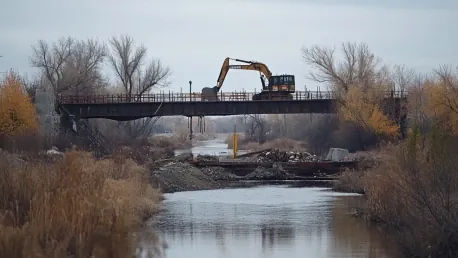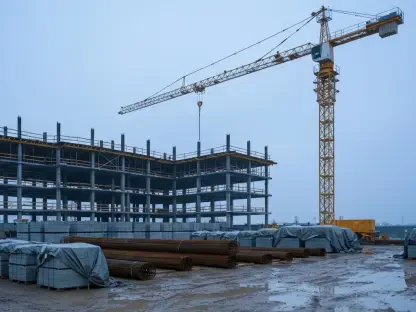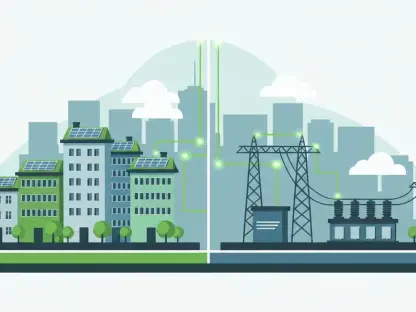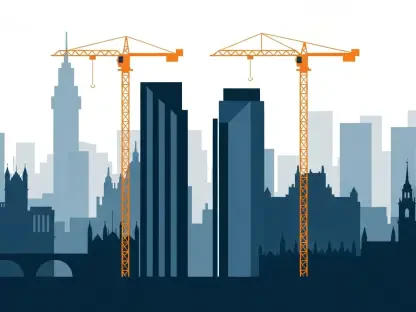The George Washington Bridge, a critical infrastructure that connects New York and New Jersey over the Hudson River, is undergoing a monumental rehabilitation. Celebrating a seven-year milestone in March, this project is part of the Port Authority of New York and New Jersey’s $2 billion “Restoring the George” program aimed at the comprehensive rehabilitation of the nearly century-old structure. This undertaking is crucial to ensure the continued safety, reliability, and operational efficiency of the bridge, which stands as the busiest in the world and vital to the region’s economy.
Replacing the Suspender Ropes
At the heart of this massive operation is the replacement of all 592 suspender ropes that link the bridge’s towering main supports to its roadway. Suspended high above the Hudson River, crews have recently completed unfastening and replacing the final steel rope, marking a significant milestone in the project. Port Authority officials, including Executive Director Rick Cotton, have underscored the significance of this undertaking, highlighting the George Washington Bridge as critical for both transportation and economic activity. The completion of this phase is a pivotal achievement in ensuring the bridge’s safety and operational reliability for the millions of commuters who rely on it daily.
The management of the suspender rope replacement on a live, active bridge demanded meticulous planning and engineering expertise. Over nearly a decade, workers methodically replaced each of the original steel ropes while keeping the bridge operational. Kevin O’Toole, Port Authority chairman, praised the engineering accomplishment, emphasizing the precision and perseverance required to complete such an intricate task. Swedish builder and developer Skanska served as the general contractor, playing a crucial role in the project’s execution by ensuring that every step met the highest standards of engineering and safety.
Engineering Feats and Project Management
The suspender rope replacement process required securing temporary ropes at each panel point to support the bridge’s weight before removing the existing cables. This step-by-step approach ensured the bridge remained stable and safe throughout the replacement. The new ropes, once installed and anchored, allowed crews to remove the temporary supports and move to the next set of ropes. The suspender ropes varied significantly in length, ranging from 38 feet to 674 feet, with the longest positioned near the bridge’s towers. This variability in rope length added to the project’s complexity, demanding precise calculations and meticulous execution.
In addition to the suspender ropes, workers also undertook the rehabilitation of the bridge’s main cables. This intensive process involved recoating and rewrapping the compacted steel wires within each cable. To further enhance the cables’ lifespan and prevent corrosion, the rehabilitation included the addition of an elastomeric wrap and a cutting-edge dehumidification system. Such measures ensure the main cables remain robust and sustainable, ready to serve the bridge’s structural needs for decades to come.
Future Projects and Upgrades
With the completion of the suspender rope replacement, focus now shifts to other ongoing projects under the Restoring the George initiative. One key project is the reopening of the bridge’s south sidewalk, closed since 2023. The renovated path will feature a new crosswalk at Hudson Terrace, new entry plazas, and a 14-foot-wide accessible ramp. Scheduled to reopen in 2026, the south sidewalk will be exclusively for pedestrians, while cyclists will use the north path. The north sidewalk, which reopened in February 2023, received similar upgrades, including improved accessibility, open-air viewing platforms, and new safety lighting. These enhancements are part of a larger effort to modernize and improve user experience on the bridge.
The renovation of the sidewalks is not merely about cosmetic upgrades; it is a strategic effort to enhance safety, usability, and accessibility for all users. By creating clear delineations for pedestrians and cyclists, the project aims to reduce congestion and improve the overall flow of traffic. The new crosswalks and ramps are designed to meet modern accessibility standards, ensuring the bridge is inclusive for users of all ages and physical abilities. These renovations are a testament to the broader vision of the Restoring the George initiative, which seeks to breathe new life into this historic structure while meeting contemporary needs.
Comprehensive Rehabilitation Initiatives
The suspender rope replacement is one of 11 major projects within the Restoring the George initiative, aiming for completion by 2030. Other key projects include the rehabilitation of the 178th and 179th Street ramps, bus ramps and a bus turnaround. These upgrades will also involve constructing new street-level sidewalks from Cabrini Boulevard to the New York anchorage, enhancing connectivity for both pedestrians and vehicles. Replacement of roadway finger joints and 32 deck panels at the two towers is another critical endeavor. This initiative is crucial for maintaining the integrity and functionality of the bridge’s roadway, ensuring it can handle the high volume of traffic it accommodates daily.
Rehabilitation of upper-level eastbound roadway pavement is also underway, with the aim of providing a smooth, durable driving surface for the millions of vehicles that cross the bridge annually. Additionally, the comprehensive plan includes the rehabilitation of the Center Avenue and Lemoine Avenue bridges and involves substantial upgrades to ancillary structures. These measures ensure the overall connectivity and efficiency of the bridge complex, which is vital for the seamless operation of the broader transportation network.
Ongoing Efforts and Milestones
The George Washington Bridge, an essential infrastructure link between New York and New Jersey across the Hudson River, is undergoing an extensive rehabilitation. Marking a significant seven-year milestone in March, this ambitious project is part of the Port Authority of New York and New Jersey’s $2 billion “Restoring the George” program. The initiative aims to comprehensively rehabilitate the nearly century-old structure, ensuring its continued safety, reliability, and efficiency. The George Washington Bridge is the busiest in the world and is crucial to the economic vitality of the region. By investing in such extensive improvements, the Port Authority aims not only to preserve the bridge’s structural integrity but also to support the region’s daily commuters and transport needs. This rehabilitation project underscores the bridge’s vital role in the daily lives of countless individuals and its significance in fostering economic growth and connectivity between the two states.









